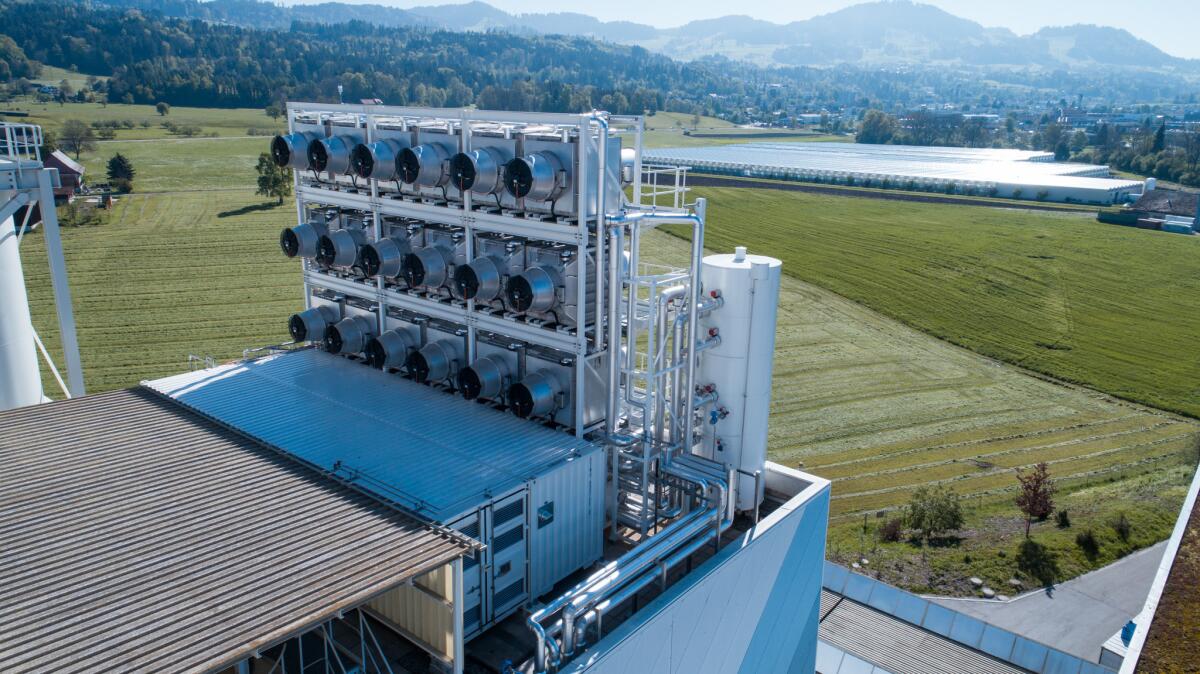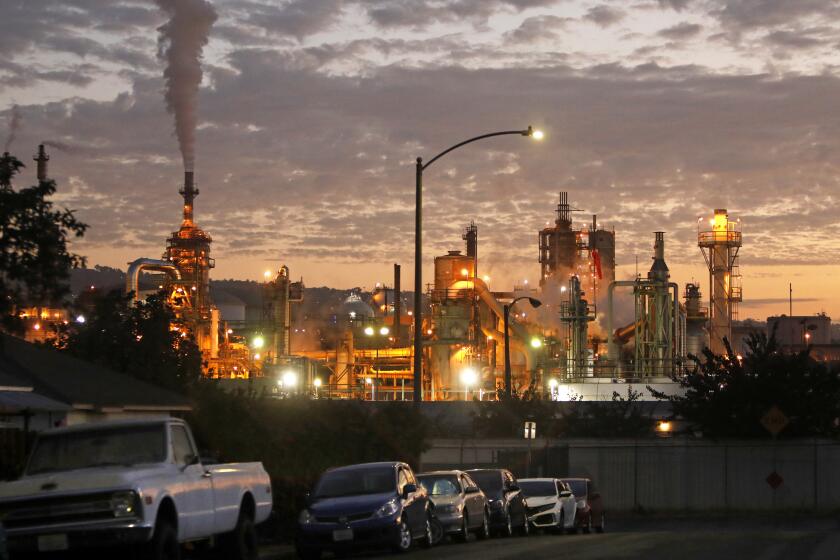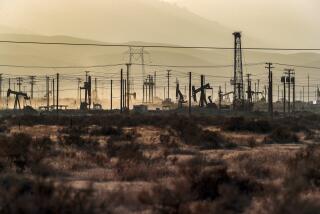How the Biden administration is pouring billions into technology that sucks carbon from the air

- Share via
The Biden administration is throwing its weight behind technology that sucks planet-warming carbon dioxide out of the air, selecting the first winners of a $3.5-billion fund dedicated to developing the machines scientists say will be needed to stop the worst effects of climate change.
Projects proposed by a subsidiary of Occidental Petroleum Corp. for Kleberg County, Texas, and by Climeworks, Battelle Memorial Institute and Heirloom Carbon Technologies Inc. for Calcasieu Parish, La., were selected for the first tranche of funding, up to $1.2 billion, the Energy Department said.
The technology is “essentially a giant vacuum that can suck decades of old carbon pollution straight out of the sky,” Energy Secretary Jennifer M. Granholm told reporters. “If we deploy this at scale, this technology can help us make serious headway toward our net-zero emission goals.”
Once operational, the hubs are expected to remove more than 2 million metric tons of carbon dioxide a year from the atmosphere, the equivalent of taking nearly half a million gas-powered cars off the road, Granholm said. Additional projects are expected to be announced next year, the Energy Department said.
In addition, the agency said it had selected 19 projects for smaller “award negotiations,” including $3 million for a direct air capture hub proposed by a division of Chevron Corp. in San Ramon, Calif., and $12.5 million for the Wyoming Regional Direct Air Capture Hub proposed by privately held Carbon Capture Inc.
California is embracing carbon capture and storage technology to fight global warming, but critics say it will only increase oil production.
Environmental officials have embraced carbon-capture technology as a way to grab atmosphere-warming carbon dioxide from oil refineries, power plants and other industrial smokestacks and then store it deep underground.
Direct air capture is another type of carbon-capture technology that involves using machines to pull CO2 out of the ambient air and store it using a variety of techniques. The industry is young and the installations are costly and require a large amount of energy to operate.
Critics worry that carbon capture is too untested to be a reliable tool in fighting climate change. And some opponents see carbon capture efforts as a way to extend the life of facilities that produce or use fossil fuels.
Swiss startup Climeworks operates the largest direct air capture plant in the world in Iceland, which is able to capture 4,000 tons of CO2 annually. That’s equivalent to a few seconds of humanity’s carbon emissions.
The company is building a plant that it says will be capable of capturing 36,000 tons of CO2 each year, and other startups are looking to build plants capable of grabbing thousands of tons of the greenhouse gas from the air.
Rubi Laboratories will capture carbon dioxide from Walmart’s supply chain and convert it to cellulose, which can be used to make yarn.
The world will need direct air capture as well as other forms of carbon dioxide removal to scale up rapidly in the coming decades. Nearly every scenario to limit global warming will require removing billions of tons of carbon from the atmosphere each year by mid-century, climate scientists say.
A good milepost to gauge whether that’s achievable will be whether the industry can capture 1 million tons of CO2 a year by 2030.
The market for those services could reach $1 trillion before the end of the 2030s, according to BloombergNEF research, if the world prioritizes high-quality carbon removal over carbon offsets, in which companies offset their carbon emissions by funding projects that either absorb or prevent carbon emissions in the first place.
About 18 direct air capture projects are operating around the world, but the ones being announced by the Energy Department will become the first commercial-scale deployment in the U.S., said Sasha Stashwick, director of policy for Carbon180, an organization focused on carbon removal policy. The overall funding represents a 400-factor increase in direct air capture capacity, she said.
“This is a really big deal in the world of carbon removal,” Stashwick said. “This is going to be the largest deployment of carbon removal ever.”
More to Read
Inside the business of entertainment
The Wide Shot brings you news, analysis and insights on everything from streaming wars to production — and what it all means for the future.
You may occasionally receive promotional content from the Los Angeles Times.












